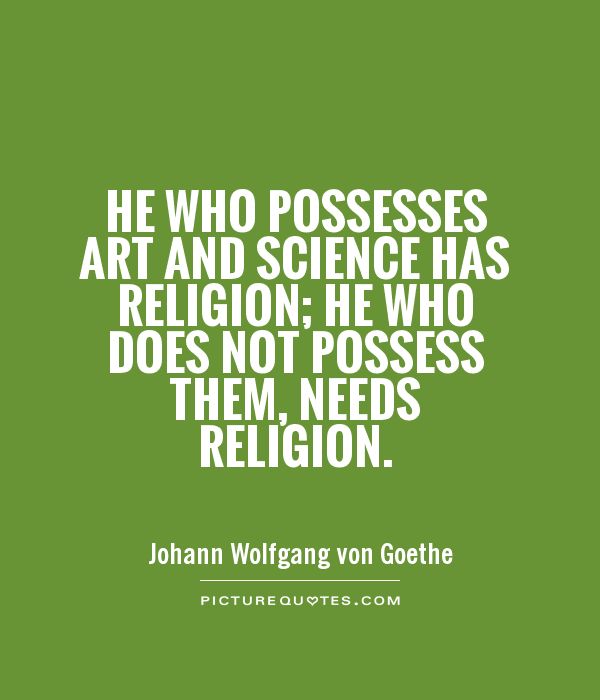He who possesses art and science has religion; he who does not possess them, needs religion

He who possesses art and science has religion; he who does not possess them, needs religion
The quote “He who possesses art and science has religion; he who does not possess them, needs religion” can be interpreted in various ways, but one common understanding is that art and science can provide a sense of spirituality and connection to something greater than oneself. In this context, religion is seen as a way to fill a void or provide meaning for those who do not have a deep understanding or appreciation for art and science.Art and science have the power to inspire awe and wonder in individuals, leading them to contemplate the mysteries of the universe and their place within it. Through the study of art and science, one can gain a deeper understanding of the world around them and the forces that shape it. This understanding can lead to a sense of reverence and respect for the natural world, as well as a recognition of the interconnectedness of all things.
Religion, on the other hand, often provides a framework for understanding the world and one’s place in it through the lens of faith and belief in a higher power. For those who do not possess a strong foundation in art and science, religion can serve as a source of comfort and guidance, offering answers to life’s big questions and a sense of purpose and meaning.
However, it is important to note that art and science are not mutually exclusive from religion. In fact, many religious traditions have a rich history of artistic and scientific exploration, with artists and scientists drawing inspiration from their faith to create works of beauty and uncover the mysteries of the natural world.
Ultimately, the quote suggests that a well-rounded individual is one who possesses a balance of art, science, and religion. By embracing all three, one can cultivate a deeper understanding of the world and their place within it, leading to a more fulfilling and meaningful life.












 Friendship Quotes
Friendship Quotes Love Quotes
Love Quotes Life Quotes
Life Quotes Funny Quotes
Funny Quotes Motivational Quotes
Motivational Quotes Inspirational Quotes
Inspirational Quotes